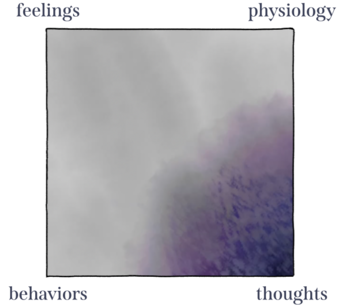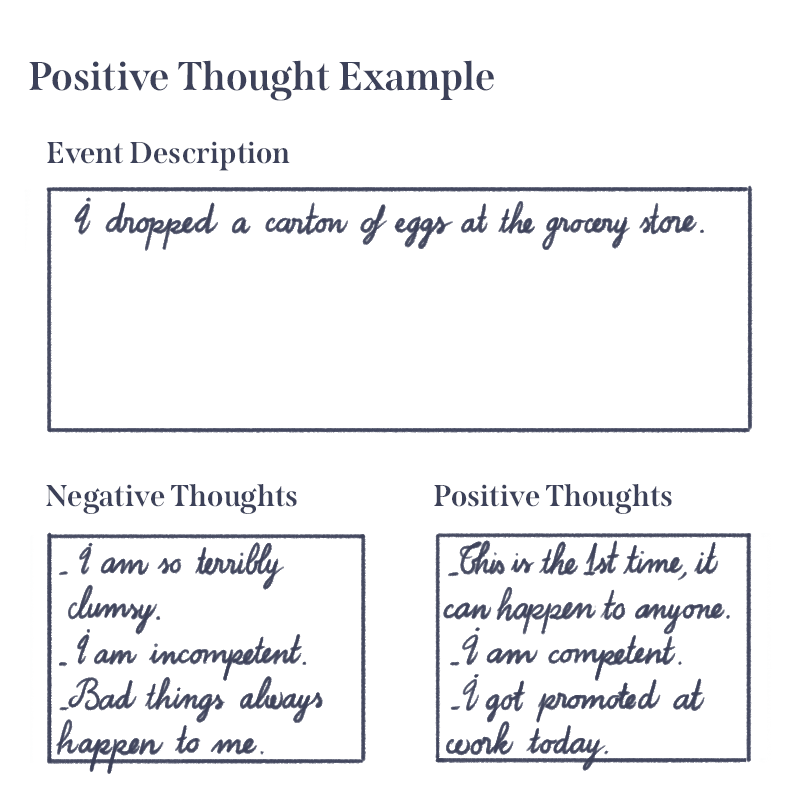





Cognitive Tools – Positive Thoughts Copy
Cognitive tools address the ‘thoughts’ corner of the CCT Square, and in particular, the child’s automatic negative thoughts. Derived from the cognitive-behavioral therapy (CBT) model, automatic negative thoughts are self-perpetuating interpretations of the outside world that are inherently negative, tightly related to chronic trauma, and accepted as true.
In CCT, we call them ‘unhelpful thoughts’ and address them head-on later in Sessions 6 and 7: Processing the Chronic Traumatic Stress History. Two strategies are introduced in CCT (positive thoughts and thought insertion) that help to identify negative thoughts and re-frame them by finding positive thoughts that provide evidence that goes against the negative thoughts.

In the positive thoughts exercise, discuss with the child a recent upsetting event. Help them identify negative thoughts about the event and then come up with positive thoughts that challenge the negative thoughts on the list. Always try to identify at least one more positive thought than the number of negative thoughts. If the child selects an event upsetting enough to re-traumatize, steer them to choose a less upsetting one for the purposes of learning this coping tool. Save very upsetting events for later during the trauma narrative. If the child cannot think of an upsetting event, be prepared to suggest some examples.
Now you can try out the positive thoughts technique yourself. Think of a recent unpleasant event and write that at the top of a piece of paper. Consider all the negative thoughts you had about the event and yourself and write them on the left side of the sheet. Then, think of at least one positive thought for each of the negative thoughts, and write them on the right side. Strive for at least one bonus positive thought. Here’s an example:

